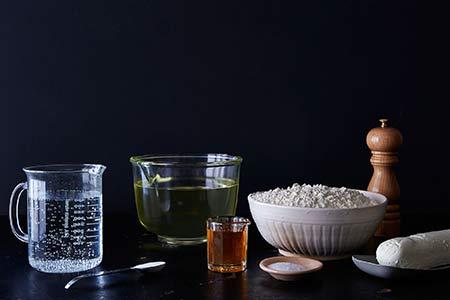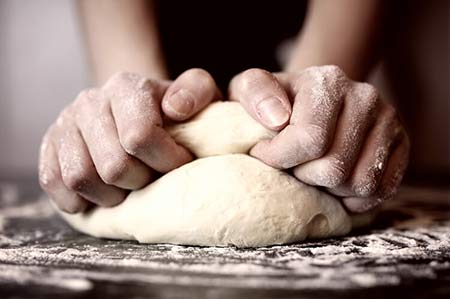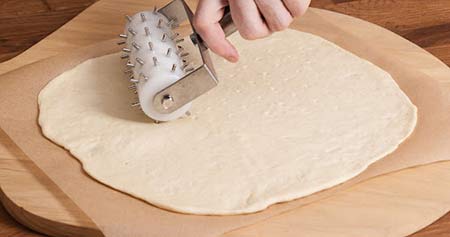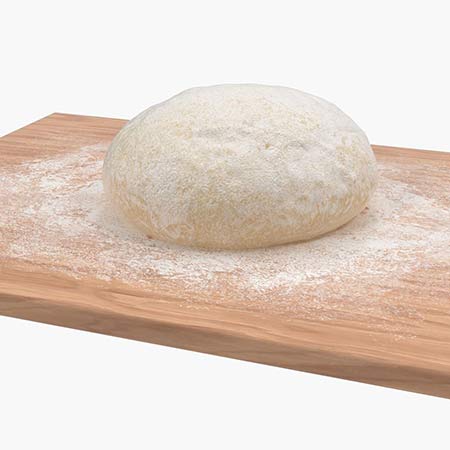How to Make Dough More Elastic? -Secret Pizza Recipe Tips
The dough is a versatile food substance that can be used in many recipes. Whether you’re making bread, pizza, or pasta dough, the end result will always depend on how elastic your dough is.
Making the dough is a common kitchen challenge that isn’t always easy. You may have a few reasons why your dough might not stretch well, but we have a few tricky tips on how to make the dough more elastic.
There are many ways to make the dough more elastic so that it stretches better without tearing or breaking apart. We’ve got a few tips up our sleeves that we’re excited to share with you today!
This Is How to Make Dough More Elastic
The dough is a very common ingredient in many baked goods, but it can be difficult to work with. If you want to make your dough more elastic, here are some tips on how to do it:
Tip 01: Measure Your Ingredients Correctly
Use the correct ingredients in the correct quantities. If you use too much flour, the dough will be stiff and tough instead of soft and elastic.
As an example, if your recipe calls for 1 cup of flour, scoop the flour into the cup and level it off. A lot of flour makes the dough stiff, hard, and elastic.

Tip 02: Use Cold Water and Gluten Together
Add cold water to the ingredients of the dough after you have combined them. The mixture of gluten and cold water will make the dough more elastic.
Tip 03: Use a Mixer with a Paddle Attachment
The best way to mix your dough thoroughly is by using a stand mixer with a paddle attachment.
You will be able to combine all of the ingredients without overworking, which would lead to gluten proteins forming in the flour and making the dough elastic.

Tip 04: Combine All Dry Ingredients before Adding Liquid
It is very important that you combine all of the dry ingredients before adding any liquids, so your dough doesn’t have an inner pocket of wetness.
In addition to adding liquid first, the presence of gluten can make your dough tough instead of elastic.
Tip 05: Let Dough Rest before Stretching It
Let your dough rest for a few minutes after mixing it and before stretching. It will help you make sure that none of the gluten proteins have formed. This will provide for a soft and elastic result.
Tip 06: Knead By Hand for a More Elastic Result
If you knead your dough by hand, it will make the gluten proteins shorter and more elastic. The longer they are, the tougher your dough becomes.
So, if you really want a soft and elastic result without using a mixer with the paddle attachment, knead by hand and be patient.

Tip 07: Don’t Overwork Your Dough!
The more you overwork your dough, the tougher it will become. If you want a soft and elastic result, be sure not to overwork your dough.
You should also understand that kneading dough by hand takes a lot more time and patience.
Tip 08: Let Your Dough Rise Properly
If you don’t let your dough rise properly, it won’t be as elastic as it could be. This is due to gluten proteins that form when the yeast ferments and releases carbon dioxide (CO2).
This process of rising not only makes the pizza or whatever else you may be cooking soft and light. It also helps to make it more elastic.
Tip 09: Cut Pieces of Dough to Increase Elasticity
When you roll out the dough for your pizza, pie, tart, or whatever else you may be making with it, use a sharp knife to cut pieces instead of rolling them out. This increases the elasticity by shortening the gluten strands.
Tip 10: Stabilize Dough with a Dough Docker
If you use a dough docker, it can decrease the amount of gluten formed in your dough. It will make your dough very elastic and less tough without needing to be rolled out with a sharp knife.

Tip 11: Flatten Dough Evenly With a Rolling Pin
If you are trying to make your dough elastic, flatten it evenly with a rolling pin instead of reaching it out. If you reach the dough, it will form an outer layer that is tough by the time the core is cooked through.
So be sure to roll your dough flat so both sides have even thickness after rising and baking.
Tip 12: Flour Pasteboard before Stretching the Dough
If you flour your pasteboard before stretching the dough, you will have better traction to shape it without stretching the outside. This will help make sure that your dough is as elastic as possible.
These tips help you make your dough more elastic and let the recipe turn out the way you want it to. We know that although it can be a little time-consuming to follow all of these tips, the end result is worth it.
Related post to read: Best Pizza Steel For Crispy, Blistered Crusts

What Causes Dough Not to Be Elastic?
An excess of gluten proteins in flour is what causes the dough to be elastic. If you leave water droplets in the dough, gluten forms which makes the dough tough instead of elastic.
Also, kneading your dough properly is a necessity if you want an elastic result. If you overwork it, the proteins will become longer and tougher instead of shorter and more elastic.
What Is the Solution to the Overworked Dough?
The overworked dough can be fixed by letting it rise overnight in the fridge before stretching it.
In case you have already begun to shape your dough, you can try cutting pieces instead of stretching them.
Conclusion
The dough is important to making baked goods that taste great and have the right texture. It doesn’t have to be hard to make as long as you just follow our tips on how to make the dough more elastic.
While none of these guidelines are too complex, if they are applied incorrectly, your recipe could be ruined. We hope you enjoy your next home-baked dish and find it as elastic as you want it to be.







